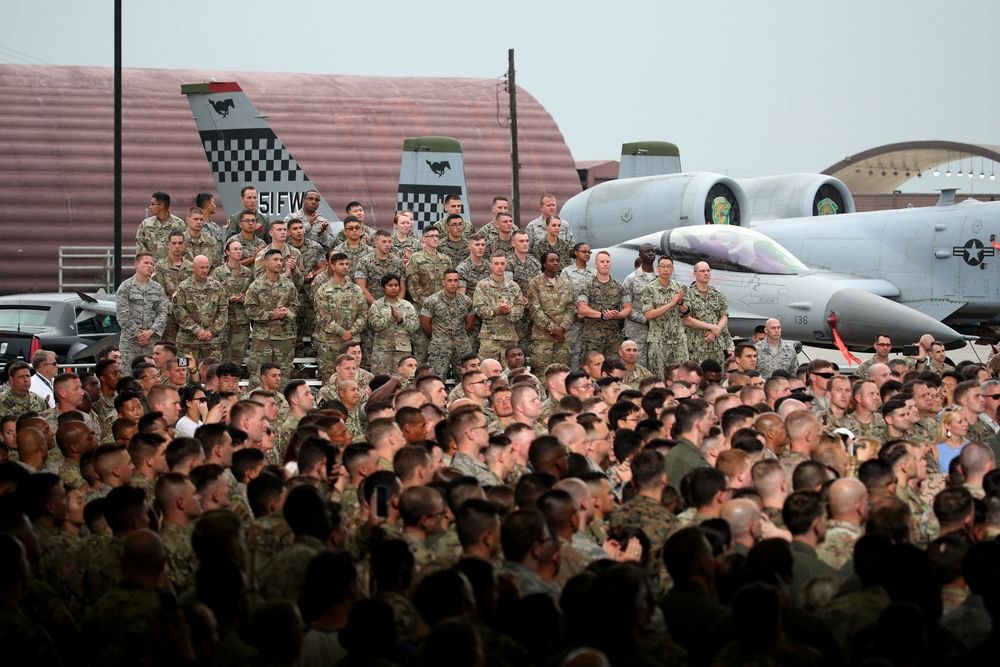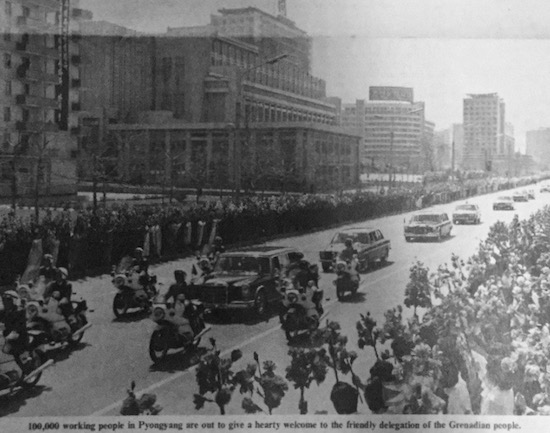
#OTD in 1953, North Korea, China and the US signed the Korean War Armistice—instating ceasefire and creating the Demilitarized Zone (DMZ). The armistice was supposed to be temporary before peace treaty negotiations, but terms could not be agreed upon and the war continues. 🧵 

Armistice negotiations first began in 1951, but took 2 years to complete as the fighting raged on.
South Korea ultimately refused to sign because President Rhee Syngman wanted to conquer the north. US bombing did not stop until 24 minutes before the ceasefire took effect.
South Korea ultimately refused to sign because President Rhee Syngman wanted to conquer the north. US bombing did not stop until 24 minutes before the ceasefire took effect.

Although the armistice called for the withdrawal of foreign troops, the US and South Korea signed the Mutual Defense Treaty just two months after the armistice. This treaty created a “legal” framework for US troops to occupy Korea indefinitely, as they continue to do to this day. 

The armistice called for a conference within three months to determine the withdrawal of foreign forces and a peace treaty. Negotiations didn’t begin until many months later at the April 1954 Geneva Conference. 



US Secretary of State John Foster Dulles refused to shake Chinese Foreign Minister Zhou Enlai’s hand. He prevented China from presiding over negotiations & micromanaged seating arrangements, insisting US delegates sit directly behind South Korea to “keep a stern eye on them.” 

The US & South Korea did not engage in good faith at Geneva.
President Rhee opposed peace negotiations and secretly requested US military aid for a surprise attack on the north. It was Rhee who insisted on a Chinese withdrawal while the US remained.
President Rhee opposed peace negotiations and secretly requested US military aid for a surprise attack on the north. It was Rhee who insisted on a Chinese withdrawal while the US remained.

South Korea insisted on UN oversight and only the withdrawal of Chinese troops. North Korea rejected UN involvement. China suggested the elections be overseen by neutral nations, which the US and South Korea rejected.
The Geneva Conference ended without a peace treaty.
The Geneva Conference ended without a peace treaty.

The armistice agreement mandates that neither side will introduce new weapons into Korea.
However, in 1957, the US unilaterally nullified paragraph 13d of the armistice agreement and stationed nuclear weapons in South Korea from 1958-1991.
However, in 1957, the US unilaterally nullified paragraph 13d of the armistice agreement and stationed nuclear weapons in South Korea from 1958-1991.

While China withdrew from Korea in 1958, the US never withdrew troops from Korea.
28,500 soldiers remain on the peninsula today. Military bases and installations continue to be built. At the same time, the US persistently obstructs inter-Korean efforts to sign a peace treaty.
28,500 soldiers remain on the peninsula today. Military bases and installations continue to be built. At the same time, the US persistently obstructs inter-Korean efforts to sign a peace treaty.

The armistice mandates the repatriation of POWs.
However, POWs from the Korean People’s Army were incarcerated for decades by successive South Korean governments. Prisoners were tortured, and forced to “convert”, or to denounce the North Korean government and socialist ideology.

However, POWs from the Korean People’s Army were incarcerated for decades by successive South Korean governments. Prisoners were tortured, and forced to “convert”, or to denounce the North Korean government and socialist ideology.


Without a peace treaty, war & division continue indefinitely. The war lives on as brutal sanctions, the separation of families, and military occupation.
For peace in Korea, we must not only end the war, but also end US occupation of the peninsula, the Pacific, and Turtle Island.
For peace in Korea, we must not only end the war, but also end US occupation of the peninsula, the Pacific, and Turtle Island.

• • •
Missing some Tweet in this thread? You can try to
force a refresh




























